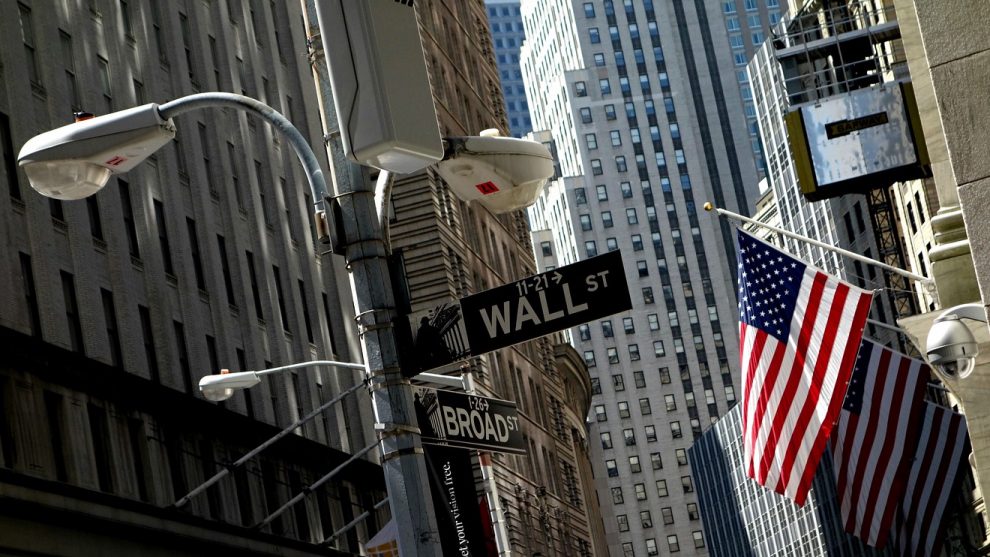
Major U.S. stock indexes edged higher on Monday, led by a rallying Nasdaq index, as investors watched lawmakers haggle over a coronavirus rescue program and braced for the busiest week of earnings season.
What are major benchmarks doing?
The Dow Jones Industrial Average DJIA, +0.31% climbed 82 points, or 0.3%, to 26,552, while the S&P 500 SPX, +0.57% rose 12 points, or 0.4%, to 3,228. The tech-heavy Nasdaq Composite COMP, +1.19% led the market’s gains on Monday, trading up 82 points, or 0.8%, to 10,446.
Major benchmarks ended modestly lower Friday, leaving the Dow with a weekly loss of 0.8%, while the S&P 500 declined 0.3% for the week. The Nasdaq lost 1.3% in a week that saw previously highflying tech shares suffer the brunt of selling pressure.
What’s driving the market?
Worries that lawmakers could struggle to pass a second U.S. spending plan was cited for limiting the stock market’s advance on Monday, even as investors continued to pile into equities despite facing a raft of geopolitical concerns and a continued rise in COVID-19 cases.
After disagreements between themselves and the White House, Senate Republicans were expected Monday to release their proposal, news reports said.
However, Republican plans to tackle the legislation in a piecemeal approach remain stiffly opposed by Democrats. The talks come as a provision that provides an additional $600 a week in unemployment benefits to more than 32 million out-of-work Americans expires at the end of the month.
“There is a very strong case to be made for additional fiscal stimulus. Both sides of the political aisle want to get something down,” said Talley Leger, senior investment strategist for Invesco, in an interview.
He noted high-frequency data tracking movements of Americans, shopping habits and dining reservations had stalled in several states, suggesting the steady recovery in U.S. economic activity thus far was at risk of coming apart.
U.S.-China tensions simmered, with Beijing last week ordering the U.S. to close its consulate in the western Chinese city of Chengdu days after Washington ordered the closure of China’s Houston consulate.
Earnings season continues apace this week, including results from a host of tech heavyweights. Google parent Alphabet Inc. GOOG, +1.06% GOOGL, +1.23% Amazon.com AMZN, +1.01%, Apple Inc. AAPL, +1.96% and Facebook Inc. FB, +1.15% are all due to report within a 24-hour window Wednesday and Thursday.
Chief executives from all four companies will appear in congressional hearings on Thursday to answer questions around their business practices.
Earnings Watch:Big Tech’s big test arrives in the busiest week of earnings season
Through the end of last week, companies representing 30.5% of the S&P 500’s market value had reported second-quarter results, with earnings beating expectations by 13.7% in aggregate, with 79% of companies beating lowered estimates, said Jonathan Golub, chief U.S. equity strategist at Credit Suisse, in a note.
See:S&P 500 earnings have been as bad as feared, even as the beat rate has improved
Price action, however, has been more muted than normal, he wrote, with companies beating both revenues and earnings outperforming the market by 1.2% versus a historical average of 1.6%. Companies missing on both measures have lagged by just 0.7% versus a historical average of 3.1%.
On the economic front, durable-goods orders for June climbed 7.3%, orders minus transportation rose 3.3%, with core capital-goods orders seeing a similar rise.
The Federal Reserve will conclude its two-day policy meeting on Wednesday. Investors generally don’t expect the central bank to make any major announcements, but look for Chairman Jerome Powell to maintain a dovish tone.
Powell’s remarks might also resonate on Capitol Hill as negotiations toward a rescue package continue, said Bernard Baumohl, chief global economist at the The Economic Outlook Group, in a note.
“If the Fed chairman emphasizes the urgent need for fiscal policy to address the widening economic divide in this country caused by the COVID-driven recession, it will be hard for those on Capitol Hill to ignore it,” he said.
Which companies are in focus?
- Moderna Inc. MRNA, +8.44% shares rose nearly 7% after it said over the weekend that it had secured another $472 million commitment from the government to develop a COVID-19 vaccine.
- Shares of toy-maker Hasbro Inc. HAS, -7.80% were off more than 7% after reporting an adjusted second-quarter profit and revenue that came in below expectations, as the COVID-19 pandemic has led to temporary store closures, product shortages and lower retail inventories.
- Albertsons Cos. Inc. ACI, -4.78% stock fell 5.7% even after the grocer reported first-quarter earnings that beat expectations.
- Papa John’s International Inc. PZZA, +0.98% stock showed little change after the pizza chain said that it will bring on another 10,000 workers due to the COVID-19-related surge in business.
- Alphabet Inc. GOOGL, +1.23% said it would extend its work-from-home order for its employees until summer 2021. Previously, the tech company had told employees they could return to the office as early as January. Its shares were up 0.7%.
- The U.S.-listed shares of Taiwan Semiconductor Manufacturing Co. Ltd. TSM, +11.77% shot up 10% after Intel INTC, -1.16% said it may make use of another company’s foundry to make its 7-nanometer chips.
How are other markets trading?
In Asia, China’s CSI 300 gauge 000300, +0.50% rose 0.5%, the Shanghai Composite Index declined gained 0.3%, while Hong Kong’s Hang Seng index HSI, -0.41% shed 0.4%.
In Europe, the Stoxx 600 Europe index SXXP, -0.31% headed 0.3% lower, while the U.K.’s FTSE 100 UKX, -0.30% declined 0.2%.
Gold futures GCQ20, +1.74% touched an all-time intraday high and were on pace to extend its record run on Monday, up 1.6%, to $1,927 an ounce on the New York Mercantile Exchange.
September futures for the U.S. crude benchmark CLU20, +0.24% fell 32 cents, or 0.8%, to settle at $40.97 a barrel on the New York Mercantile Exchange.
The 10-year Treasury note yield TMUBMUSD10Y, 0.598% hung around the lowest levels since April 21 at 0.58%. Yields move in the opposite direction of prices.
In currency markets, the dollar weakened 0.9% against its six major rivals, falling to around its lowest level in two years, as gauged by the ICE U.S. Dollar Index DXY, -0.81%.











